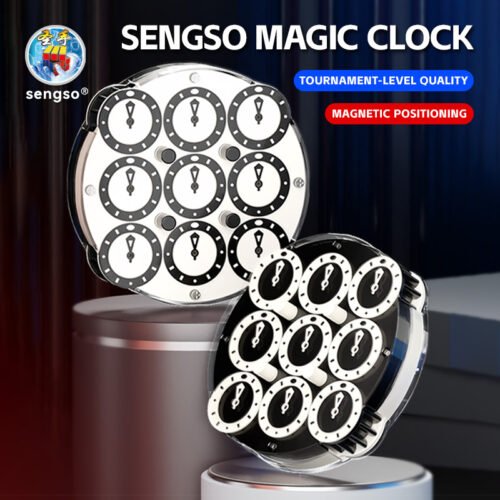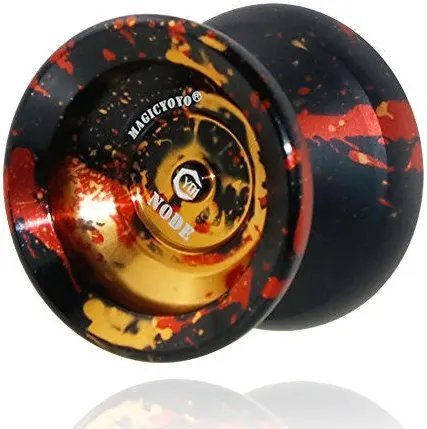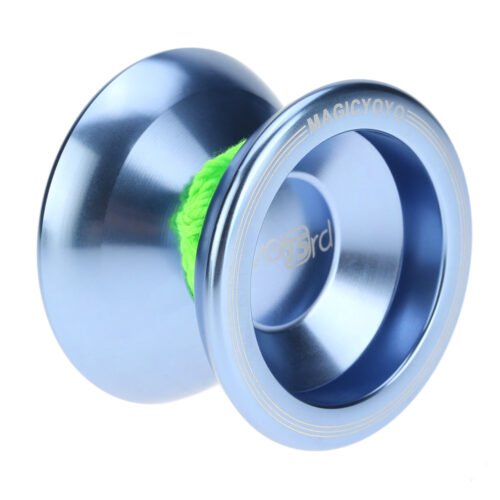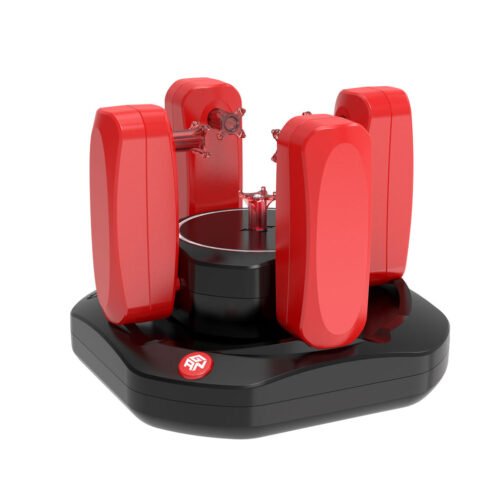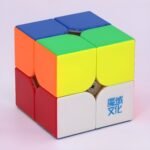Introduction to Rubik’s Cube
Table of Contents
The Rubik’s Cube, invented in 1974 by Hungarian architect Ernő Rubik, has captivated the minds of puzzle enthusiasts worldwide. Originally designed as a teaching tool to help students understand three-dimensional geometry, it was later commercialized in the 1980s and quickly turned into a global sensation. Since its introduction, the cube has sold over 350 million units, making it one of the most popular puzzles of all time. Its colorful, multifaceted design presents not only a challenge for individuals but also a platform for competitive speedcubing, which showcases incredible skill and dexterity.
The significance of the Rubik’s Cube transcends mere entertainment; it fosters critical thinking, improves hand-eye coordination, and encourages a problem-solving mindset. Many enthusiasts embark on a journey to not only solve the cube but to explore various techniques to how to solve Rubik’s Cube faster. Through practice and dedication, cubers develop strategies that simplify the complex process, ultimately leading to improved solving times. Within this community, there exists a wealth of resources and support, allowing novices and experts alike to exchange tips to improve Rubik’s Cube skills.
As you delve deeper into the world of cubing, you will encounter a variety of methods and techniques. These techniques enhance speed and efficiency, making the solving process more structured and less daunting. The journey to speedcubing involves learning and mastering algorithms, practicing finger tricks, and developing mental strategies that allow for rapid execution. Whether you are a newcomer eager to get fast on Rubik’s Cube or a seasoned solver seeking refinement, understanding the cube’s mechanics and origins will provide a solid foundation for your journey ahead.
Basic Methods to Improve Your Rubik’s Cube Skills
Improving your speed on the Rubik’s Cube begins with mastering the foundational techniques that enhance your solving methods. A significant aspect of becoming fast on the Rubik’s Cube involves efficient memorization strategies. Using mnemonics can greatly assist in recalling complex algorithms, which are essential for executing swift solutions. Additionally, consider breaking down each algorithm into smaller, manageable segments. This allows you to learn and memorize each part step-by-step, ultimately leading to faster recall during a solve.
Another critical element in learning how to solve the Rubik’s Cube faster is to focus on pattern recognition. As you become familiar with the various configurations of the cube, you will start to notice recurring patterns. Recognizing these patterns enables you to anticipate and execute moves with more confidence and efficiency, ultimately streamlining your solving process. To sharpen this skill, practice solving without looking at the cube or by timing yourself while focusing on specific sequences. This practice will enhance your reflexes and build your ability to spot essential patterns rapidly.
Moreover, mastering efficient move sequences can significantly reduce your solve time. This involves minimizing the number of moves needed to reach the solved state. Techniques such as cross-solving, F2L (first two layers), and OLL (orientation of the last layer) should be explored and practiced consistently. Understanding when to apply each technique will not only speed up your performance but also simplify the solving process. By incorporating these methods, you can bolster your Rubik’s Cube skills and work towards getting fast on the Rubik’s Cube with continual practice.
Time Reduction Techniques
To enhance your efficiency and speed in solving the Rubik’s Cube, understanding time reduction techniques is paramount. First and foremost, consistent practice is essential. Regularly solving the cube helps to build muscle memory, enabling you to execute algorithms more swiftly. Emphasizing daily practice sessions, even if brief, allows you to reinforce your skills and internalize the patterns and movements required for quicker solves. Consider dedicating a certain amount of time each day specifically for Rubik’s Cube practice; this will greatly contribute to how to solve Rubik’s Cube faster.
Utilizing a timer is another effective method in your quest to improve. Time tracking reveals your progress and enables you to identify your average solve time. By recording your times for multiple solves, you can analyze the data to highlight your strengths and weaknesses. This allows you to focus your efforts on specific areas that may be slowing you down. Standardizing the environment in which you practice, such as using the same type of cube and minimizing distractions, further enhances the accuracy of your time trials.
This brings us to the importance of analyzing previous solve times. By reviewing your past performances, you can spot potential bottlenecks in your solving process. Look for recurring patterns in your slower times. Are there specific algorithms that take longer to execute? Are you struggling with certain cube configurations? Understanding these challenge areas will aid you in implementing targeted strategies. Additionally, consider exploring online communities or forums where others share their experiences and strategies on how to get fast on Rubik’s Cube. Engaging with fellow enthusiasts can provide fresh insights and innovative tips to improve your Rubik’s Cube game.
Fingertip Techniques and Holding the Cube
Mastering the Rubik’s Cube involves not just the understanding of algorithms but also the optimization of physical handling techniques. Proper finger positioning and grip of the cube are critical components that can drastically enhance your speed and performance. To get fast on Rubik’s Cube, it is essential to develop a method of holding the cube that allows for maximum maneuverability and control.
One effective grip is the “Two-Handed Grip,” where the cube is held in a way that utilizes both hands efficiently. This grip typically allows for your fingers to rest comfortably on the sides of the cube, providing easy access to rotation. When holding the cube, positioning your fingers in a way that they can swiftly transition between different sides is imperative. By placing your thumb and ring fingers on opposing faces, you can rotate the cube rapidly without losing control.
In addition to the grip, finger techniques, such as the “Flick” and “Sledgehammer” methods, are instrumental in achieving quicker turns. The Flick involves swiftly moving your finger across one face of the cube, which essentially translates into a quick 90-degree rotation. Practicing this technique, alongside others, can significantly lower your completion time. To enhance your skills, focus on executing the algorithms with a smooth flick instead of a rigid push, allowing for a more fluid response from the cube.
As you become familiar with these fingertip techniques, consider integrating them into your practice sessions. This practice will not only help you become adept at executing algorithms but will also aid in reducing your overall solving time. By adopting proper finger positioning and grip, you will find yourself equipped to solve the Rubik’s Cube faster than before, making the journey toward mastering it both enjoyable and rewarding.
Understanding Color Neutral Solving
Color neutrality in Rubik’s Cube solving refers to the ability to start a solve regardless of the color of the cube’s first face. This skill allows a solver to utilize various starting positions effectively, rather than being dependent on one specific color. The principle behind color-neutral solving is based on the acknowledgment that while many solvers may have a favorite starting color, limiting oneself to this choice can hinder speed and flexibility during competition or timed solving scenarios.
The benefits of adopting a color-neutral approach are significant. Firstly, it enhances one’s adaptability to any cube orientation, which is particularly useful during competitions where the starting position may be randomized. By getting fast on Rubik’s Cube through color neutrality, solvers can experience reduced solving times, as they become proficient in recognizing all color schemes rather than just their preferred ones. This broad grasp enables quicker identification of patterns and the execution of algorithms, regardless of the cube’s alignment.
Practicing color neutrality involves methodically training oneself to become fluent in solving with each of the colors. A good strategy is to frequently mix up the starting face and practice solving from that position. Solvers can begin by performing algorithms with different colors on the bottom and observe how various cryptographic techniques can be applied. Additionally, using a timer can track improvements and help gain insights into one’s solving capabilities. Regular practice will not only lead to familiarity with the different orientations but will significantly contribute to achieving faster resolves.
In essence, understanding and implementing color-neutral solving can be transformative for those looking to improve their Rubik’s Cube skills. The increased flexibility this approach offers can ultimately lead to mastering the cube more effectively and efficiently.
Transitioning to Intermediate Methods: CFOP
The CFOP method, also known as the Fridrich method, is a popular approach among advanced Rubik’s Cube solvers seeking to improve their speed and efficiency. Understanding how to solve Rubik’s Cube faster involves adopting this method, which consists of four primary steps: Cross, F2L (First Two Layers), OLL (Orientation of the Last Layer), and PLL (Permutation of the Last Layer). This approach streamlines the solving process and allows for quicker solutions compared to basic methods.
The first step, Cross, involves creating a cross shape on one face of the cube, aligning the edges with the center pieces. This foundational move sets the stage for the next phase and is critical for ensuring that subsequent steps are executed smoothly. After completing the cross, the F2L step begins, where you pair up corner and edge pieces and place them into the correct slots on the first two layers. Mastery of this step is essential, as it combines two crucial placements into one maneuver, thereby significantly reducing moves made and ultimately increasing speed.
Following F2L, solvers move on to the OLL, which focuses on orienting all pieces of the last layer so that the top face is completed in a single color. This step does require learning numerous algorithms; however, with practice, you will find that your capacity to get fast on Rubik’s Cube improves. The final PLL stage involves permuting the last layer pieces to get them in their correct positions without disturbing the already completed layers. Here, you will apply additional algorithms based on the patterns observed.
By integrating the CFOP method into your current solving practices, you will experience a marked improvement in speed. These techniques serve not only to expedite the solving process but also to refine your overall skills in handling the Rubik’s Cube. As you familiarize yourself with each stage and its algorithms, you will discover numerous tips to improve Rubik’s Cube performance and reach your speed-solving goals.
Choosing the Right Cube for You
When starting your journey in solving the Rubik’s Cube faster, selecting the right cube is a critical first step. The market offers a variety of options, especially for beginners. Among these, the Little Magic 3×3 and Meilong 3×3 are two popular non-magnetic models that are often recommended. These cubes strike a balance between performance and affordability, making them suitable for novice cubers.
The Little Magic 3×3 is known for its smooth turning and reliability. It offers a great feel right out of the box, allowing users to get fast on Rubik’s Cube quickly. One of its standout features is its affordability, making it accessible for those just starting out. The design is also user-friendly, meaning that beginners can focus more on learning the algorithms instead of getting bogged down by a difficult cube. Its lightweight structure enhances maneuverability, providing the opportunity to experiment with speed-solving techniques.
On the other hand, the Meilong 3×3 is another excellent choice for improving Rubik’s Cube skills. This model tends to have a slightly more tactile feel, which some users prefer. While its performance may not be as refined as premium cubes, it still offers a satisfying solving experience and is cost-effective for those exploring their cubing potential. Both the Little Magic and Meilong models allow for a solid foundation in cubing, making them prime candidates for anyone looking to learn tips to improve Rubik’s Cube methods.
Ultimately, the right cube will enhance your solving experience and enable you to enjoy each session more thoroughly. Choosing between the Little Magic and Meilong cubes comes down to personal preference and individual solving styles. Engaging with both options may provide insights into which characteristics facilitate your journey to solving the Rubik’s Cube more effectively.
Exploring Magnetic Cubes for Enhanced Performance
Magnetic cubes have recently gained popularity among Rubik’s Cube enthusiasts, offering numerous advantages in terms of performance and speed. Unlike traditional non-magnetic cubes, magnetic variants incorporate small magnets at the core of each piece. This innovative design allows for improved alignment and stability during solving, which can significantly enhance the user experience. When aimed at learning how to solve Rubik’s Cube faster, switching to a magnetic cube can provide that edge many cubers seek.
One of the primary benefits of using a magnetic cube is the increased control and precision it offers. The magnets ensure that the pieces lock into place more effectively, reducing the likelihood of misalignment during fast turns. This characteristic is particularly beneficial for speedcubers who are keen on improving their overall solving times. By offering a more consistent feel, magnetic cubes can help users get fast on Rubik’s cube as they practice and improve their techniques.
In terms of affordability, several magnetic cubes are available at various price points, making them accessible for cubers of all skill levels. Models like the MoYu WeiLong WR M 2021, GAN 11 M Pro, and the Valk 3 M provide exceptional performance without breaking the bank. Each of these recommended cubes offers distinct features, such as customizable tension settings and smooth turning mechanics, which cater to different preferences. When considering tips to improve Rubik’s Cube skills, investing in a magnetic version can be a game changer.
Moreover, the experience gained from using magnetic cubes can serve as a foundation for implementing advanced techniques. As users become accustomed to the feel and responsiveness of these cubes, they can focus on optimizing their strategies and algorithms. Thus, magnetic cubes not only enhance speed but also contribute to a deeper understanding of the solving process, making them an invaluable tool for anyone looking to elevate their Rubik’s Cube performance.
Where to Buy Rubik’s Cubes in India
When it comes to purchasing Rubik’s cubes in India, a variety of online platforms offer a wide selection of options. Among these, mcubes India stands out as a leading retailer, particularly well-regarded by puzzle enthusiasts. Founded in 2018, mcubes India has developed a strong reputation for quality service, ensuring that customers have access to both standard and advanced cubes that can help them learn how to solve Rubik’s Cube faster.
One of the primary advantages of purchasing from mcubes India is their commitment to customer satisfaction. They offer free shipping on orders above a certain amount, making it economical for those looking to buy multiple cubes or related accessories. Additionally, their policy on easy exchanges provides peace of mind, allowing customers to return or exchange cubes if they are not satisfied for any reason.
In terms of product variety, mcubes India stocks a range of brands and types of Rubik’s cubes, from beginner kits to professional-grade puzzles. This wide selection caters to different skill levels and preferences, making it easier for buyers to find what works best for them. Whether you are looking for speed cubes to get fast on Rubik’s Cube or want another model to practice the various techniques outlined in the tips to improve Rubik’s Cube section, mcubes India has something for everyone.
Other platforms worth considering include Amazon India and Flipkart, which also carry a variety of Rubik’s cubes. However, mcubes India tends to focus specifically on puzzles and related products, ensuring a more specialized shopping experience. As the sphere of cubing continues to grow in India, platforms like mcubes India play a pivotal role in supporting both new and experienced cubers in enhancing their skills.


